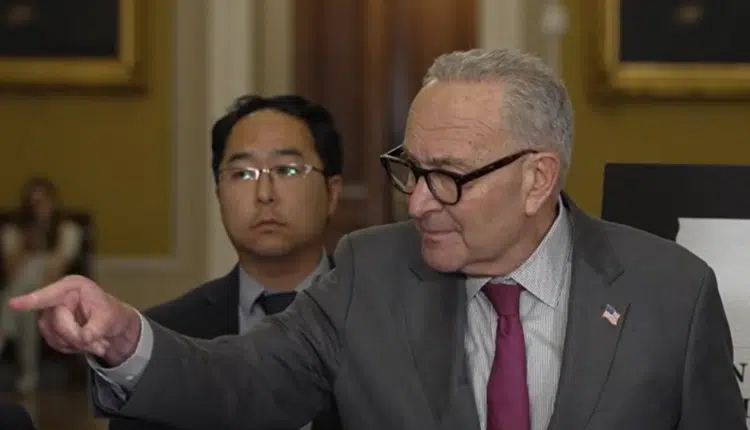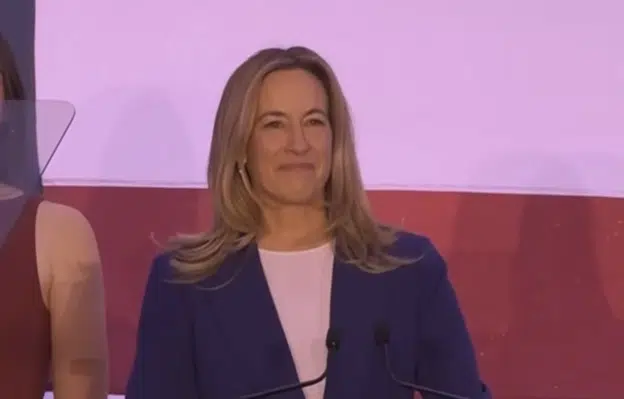By Kevin Mooney –
Labor bosses who have failed to secure pension obligations for their membership have successfully schemed with the Obama White House to coerce non-union workers into underfunded plans.
On May 13, an unheralded executive order that would pressure federal agencies into accepting Project Labor Agreements (PLAs) on construction projects that exceed $25 million officially went into effect at the expense of private industry and U.S. taxpayers.
PLAs stipulate that projects be awarded to contractors and subcontractors who agree to recognize unions as representing their employees during that particular job. Although nonunion contractors are permitted to bid on PLA projects, the reality is that the projects are awarded almost exclusively to unionized contractors, critics point out.
Only 15.6 percent of the nation’s private construction work force is unionized, Labor Department statistics show. This means PLAs could be used to discriminate against the more than eight out of 10 construction workers who are not part of a union. Moreover, PLAs put non-union contractors a great disadvantage where pension requirements are concerned because they are forced to pay twice.
Under PLA agreements, private shops must pay into union pension plans and existing 401 (k) company plans. Moreover, as a general rule non-union contractors cannot typically suspend and restart contributions to individual 401 (k) accounts meaning they must take double payments into account on their contract bid.
The PLA hex is also put onto individual workers since the employer contributions that are sent to union pension plans will not materialize as benefits unless they agree to leave their non-union company and join with the union until they are vested.
This unappetizing arrangement raises important questions about motivations. After posturing as strong advocates for retirements benefits, why would labor bosses insist on a provision precludes workers from receiving benefits unless they join with the union?
Even as unions continue to market themselves to new members on the basis of generous pension programs, government figures show these plans are performing poorly in comparison with retirement packages that operate beyond the orbit of organized labor.
The average union pension has resources to cover only 62 percent of what is owed to participants, according to the Pension Benefit Guarantee Corp. Pensions with less than 80 percent of the assets needed to cover present and projected liabilities are considered “endangered,” while those that fall below a 65 percent threshold are classified as “critical” under the Pension Protection Act of 2006.
PLAs are best understood within the context of other paybacks to labor bosses that were organized after President Obama and top congressional Democrats failed to advance the Employee Free Choice Act (EFCA), which included the anti-democratic card check provision and binding arbitration.
In the 2008 election cycle, labor union political action committees contributed more than $66 million to congressional candidates with 92 percent of those contributions going to Democrats, according to OpenSecrets.org. Labor PACs also contributed $531,711 to Mr. Obama’s campaign that year.
“This is incredible when you think about it, after all the promises that were made, 2009 comes off a pretty unsuccessful year for organized labor,” said Ben Brubeck, director of labor and federal procurement for the Associated Builders and Contractors (ABC), a trade organization for private companies. “You would think they would have to get something.”
That something comes in the form of PLAs, which are now in motion.
Obama’s executive order 13502 claims that PLAs would heighten efficiency and alleviate labor disputes that prevent projects from being completed on time. The order reads in part as follows:
The use of a project labor agreement may prevent these problems from developing by providing structure and stability to large-scale construction projects, thereby promoting the efficient and expeditious completion of federal construction contracts, the order says. “Accordingly, it is the policy of the federal government to encourage executive agencies to consider requiring the use of project labor agreements in connection with large-scale construction projects in order to promote economy and efficiency in federal procurement.
But the ABC takes issue with the idea that PLA’s are necessary to ensure labor cooperation to keep projects running on time.
“This is a particularly disingenuous argument that flirts with blackmail, because unions cause many project delays through illegal organizing and jurisdictional disputes on jobsites,” according to an analysis posted on the ABC website. “Merit shop workers do not strike, yet they are excluded from working on PLA projects.
Moreover, there are a number of studies that show PLAs will increase the cost of construction projects, Brett McMahon, an ABC representative explained in an interview.
Decades of studies have shown that PLAs increase the cost of construction,” said McMahon, who is also vice-president of Miller and Long, a Maryland-based concrete construction company. That’s a bad idea during good economic times, but it’s utterly foolish when we are already financially upside-down as a nation. We are financing these projects with debt that is underwritten by taxpayers — many of whom are not going to be able to work on these projects without paying union dues.”






